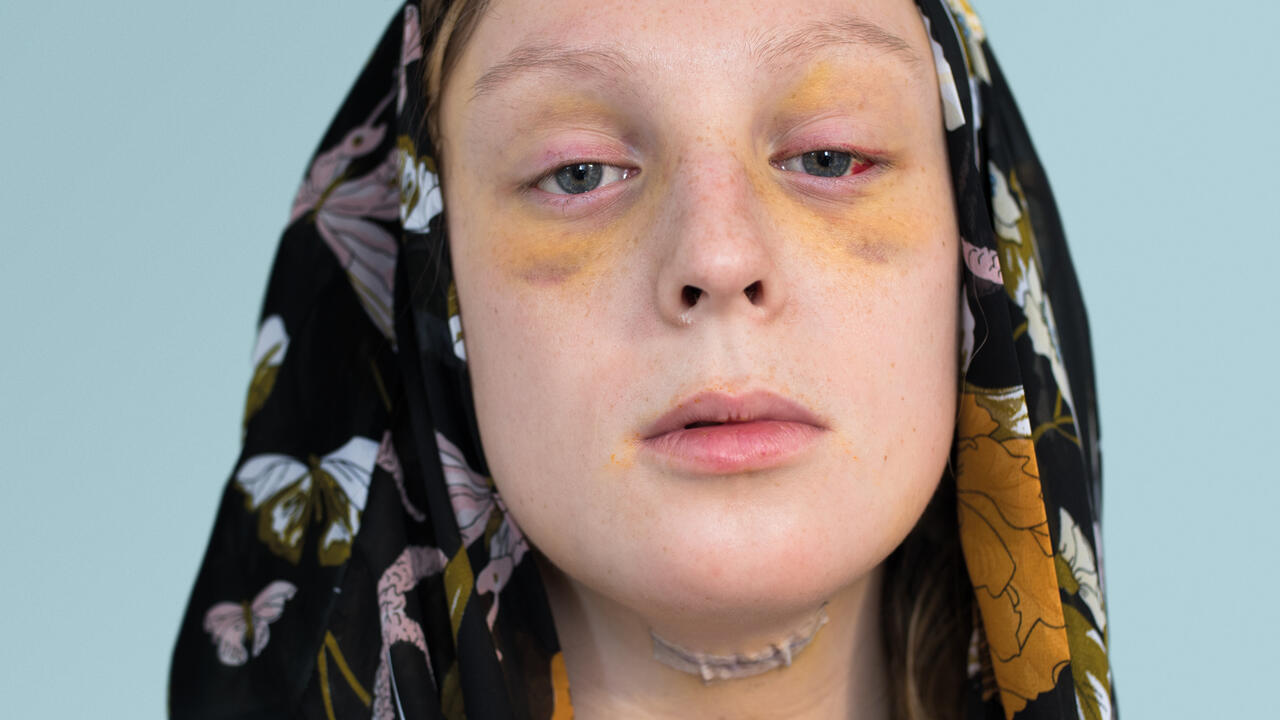Tacita Dean Unearths Old Memories
An image from the artist’s ‘Painted Trees’ series evokes vivid visions of home for a renowned writer
An image from the artist’s ‘Painted Trees’ series evokes vivid visions of home for a renowned writer

Looking at Tacita Dean’s Crowhurst (2006), I am confronted by a worrying gap in my memory. It depicts a yew tree said to be 4,000 years old, located on the grounds of a 12th-century church in England – or, more specifically, in Crowhurst, a small village in East Sussex, a few miles from where I went to school. In Dean’s image, the Crowhurst Yew looks like it should be a local landmark; the composition’s not-quite-erased background betrays the tree’s huge size, looming over the surrounding gravestones, while its bloated, cracked trunk reveals a cavity that seems purpose-built for after-school activities – a meeting place, a pissoir, a smoking room. Despite the fact that I have no recollection of the yew, I can imagine this inner chamber, both cramped and spacious, knots sticking into your back as you try to get comfortable, the fusty smell of rotting plant matter and cigarette butts, the particular thrill of being hidden in plain sight.

Crowhurst was born from the series ‘Painted Trees’ (2005–ongoing), in which Dean painted out the backgrounds of old postcards and, later, sought out and photographed ancient trees across Britain, also employing this white-out technique. The resulting work is blown up to three by four metres to create a tree-sized – if not quite ancient yew-sized – presence in the gallery. Folded into the work is a coincidence: the yew shares its name with one of Dean’s obsessions, the ill-fated British sailor Donald Crowhurst, who disappeared in the late 1960s while competing in a round-the-world yacht race. Dean has made several films inspired by Crowhurst’s story and travelled to the Cayman Islands to find and document his wrecked ship, the Teignmouth Electron.
This name-doubling is an operative method of Dean’s; chance, coincidence, memory and obsession form an associative framework and ulterior logic through which the work takes shape. Her 2018 film, Antigone, saw the artist transpose Sophocles’s play to the town of Thebes, Illinois; Antigone is also the name of Dean’s older sister. I soon discover that I have exerted my own Dean-esque doubling, since the Crowhurst. Yew, it turns out, is located in Surrey, not Sussex – in a different village of the same name. By the time I realize this, the damage is already done; I have begun to reform my memory of the Crowhurst I knew around something that was never there.
This article first appeared in frieze issue 246 with the headline ‘Ring Cycle’
‘Tacita Dean: Blind Folly’ is on view at the Menil Collection, Houston, from 11 October to 19 April, 2025
Main image: Tacita Dean, Crowhurst, 2006, gouache on fibre based photograph mounted on paper, 3 × 4.1 m. Courtesy: the artist, Frith Street Gallery, London and Marian Goodman Gallery, New York / Paris / Los Angeles; photograph: Tom Bisig























